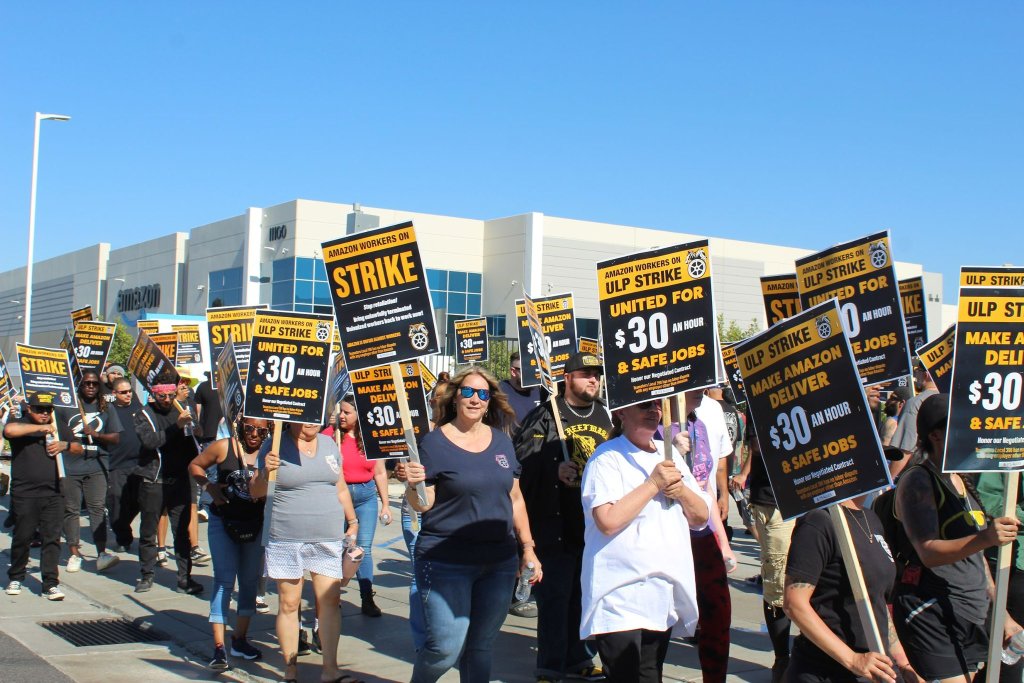Ahead of Uber’s massively hyped debut on the public stock market, thousands of drivers assembled across the world on Wednesday in a yet another demonstration against the exploitative gig-economy model. Their strike, timed with rush hour in New York and day-long in cities like Los Angeles, was meant to call attention to the fact that drivers—who in almost every case are not technically employees—do not earn living wages, even as major players in high finance gush over what’s expected to be a historically rich valuation.
But like past protests and strikes, the estimated nearly one million Uber drivers in the US ran up against a problem embedded in the predatory structure of the company, as well as that of rivals like Lyft: They may be doing work, but these aren’t supposed to be “jobs” in the technical sense. At a time when even traditionally powerful unions are losing their ability to defend benefits for workers, these drivers exist in a legal category where they are both vulnerable to exploitation and unable to access the usual tools to fight for better treatment.
Videos by VICE
“The company is built on disdain for workers and regulations,” Rick Claypool, research director at Public Citizen, a left-leaning advocacy group, said of Uber. “It’s hard to see how it’s going to change.”
From the beginning, Uber—founded as UberCab in 2009—has touted the flexibility of its approach, which allows people with certain kinds of cars to log on and off as drivers on their own schedule. It has shared stories of Uber drivers who make money on the side while raising kids or going to school. And it has attracted many people looking for a side hustle: about half of its drivers are not coming to Uber with the intention of making their entire living there, according to a 2018 survey by Ridester, a ride-hailing analytics company.
That also means the other half or so of these drivers are driving full time. And for these workers the fact that Uber and Lyft have made no move to provide the benefits historically associated with a full-time job is both exploitative, and they would argue, possibly illegal. This leaves drivers as independent contractors or workers under the gig economy umbrella, and allows Uber to avoid treating them as employees with actual benefits, a longstanding practice the Trump administration has recently enabled.
Uber and Lyft tend to avoid conversations about basic workers’ rights by advertising drivers’ hourly pay. Uber has said its drivers make enough money—pointing out a $19 to $21 per hour wage median in cities like Seattle, which is technically well above the average minimum wage in the US as a whole. But this doesn’t reflect the out-of-pocket costs required to be a driver in the first place, including the car insurance, gas, and possible lease payments. And the handful of drivers out there making six figures are an aberration, not the norm.
The churn that companies like Uber experience, with drivers starting and quitting regularly, also reflects the low value placed on drivers and their general lack of satisfaction. In 2015, Uber admitted that its drivers often bail after one year. One of the reasons for that? Feeling expendable. While the companies claim that they would prefer to retain their drivers, their lethargic responses to backlash suggest that this kind of chaos is more or less accepted as a sacrifice for retaining their power.
So it’s not surprising that driver protests and resistance haven’t had much of an effect on the companies. “With the IPO, there are more eyes on Uber, but they’re still very clear about lowering drivers’ wages and moving to driverless cars,” said Brendan Sexton, executive director of the Independent Drivers Guild, a union-affiliated group that has won piecemeal gains for ride-hail drivers in New York. Actual strike participation in New York, however, was estimated to be just a few hundred drivers, even as 65,000 vehicles in the city were tied to Uber last year, according to the New York Times.
Sexton, who helped organize the demonstrations, said it wasn’t just low wages holding drivers back from a legit livelihood. It’s also the precarity ride-hail drivers experience, since it’s easy to have their account deactivated or quickly bleed money on car payments. On Reddit, Uber drivers have detailed how easy it is to lose their access to the service without any notice, another free pass that Uber gets by never fully employing its drivers, which would make it a lot easier for them to form a normal labor union.
Cities have been able to pass a few regulations to rein in the ride-hailing industry. New York’s minimum wage requirement was projected to increase drivers’ income by $10,000 annually. And cities like New York and Seattle have capped the number of cars companies can put on the road, which could technically mean more profit per driver.
But the fact remains that Uber and Lyft have positioned their companies carefully to avoid what little is left of American labor protections, emphasizing their gig economy tenets: low overhead and upfront costs, decentralized growth, and the illusion of choice.
“They can say we’re creating jobs, and then on the other hand say this is not a full time job, it’s a gig you can do when going from one place to another,” Claypool said. “They’ve taken advantage of that.”
Sign up for our newsletter to get the best of VICE delivered to your inbox daily.
Follow Ankita Rao on Twitter.




